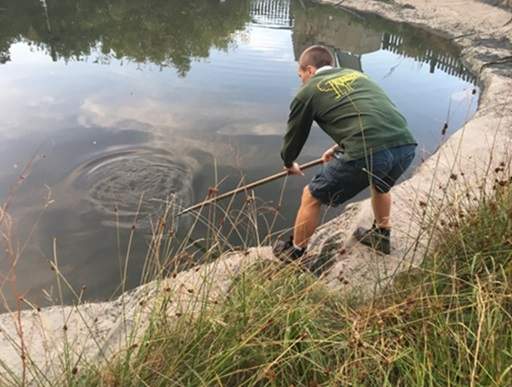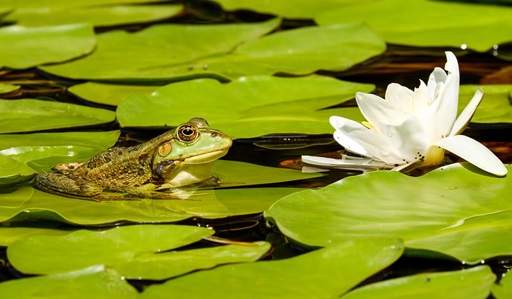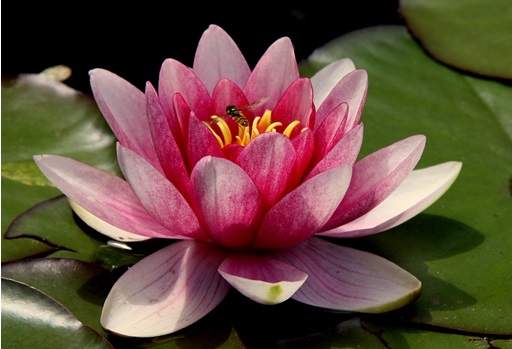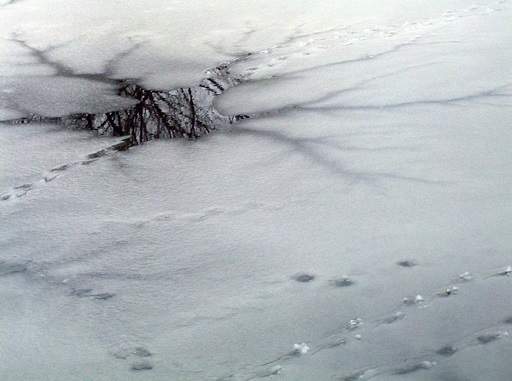Pond care through the seasons
Ponds can provide a habit for a wide range of wildlife but do require some care and attention throughout the year to prevent them from silting up, turning into bog gardens and becoming an eye saw. The key to a healthy pond is keeping the water clear and making sure plants don't take over. A pond with the right balance of plants and oxygen will allow your aquatics to thrive and attract wildlife to your garden.

Spring Pond Care
- Look out for pond algae and weed which can be rampant in late spring, removing it with a rake.
- Algae thrives when there is lots of sunlight, carbon dioxide and mineral salts. If it takes over your pond every year consider growing more plants such as water lilies which will block out some of the sunlight. Also consider installing more aquatic plants which absorb minerals and oxygenate your pond, absorbing carbon dioxide in the process and helping to stave off algae growth.
- Aim for a good mix of underwater plants (submerged), plants with floating leaves and plants that grow out of the water. Having some bank-side plants or marginals also provides shelter and food for animals in your pond and those who visit, such as frogs, toads and dragonflies.
- Lift, divide and re-pot deep water aquatics with floating leaves (e.g. water lilies). Their thick root systems are best divided with a knife or sharp spade with divided clumps replanted singly.
- Deep water aquatics should be rested on a raised platform - using bricks works well - so that their leaves can always reach the pond surface. The platform can be lowered in stages over time.
- Feed water lilies with a specialist aquatic plant food to encourage stronger flowering.
- Improve the oxygen levels in your pond by circulating it with a pump or installing a water feature. This will help fish and amphibians, particularly in deeper ponds where oxygen does not readily diffuse through the water.
- If you need to top up the water level, do so ideally with collected rain water, releasing it slowly at the bottom of the pond to avoid a build-up of salt and minerals.
- Begin feeding fish using a high-carbohydrate food to help them with increased activity once the temperatures start to exceed 10 degrees Celsius.

Summer Pond Care
- Remove blanket weed and thin out pond plants, keeping half of the surface free of vegetation.
- Prune off any straggly or tired leaves and spent flowers from water lilies.
- Water lilies can be prone to attack by aphids (sap sucking insects) in late summer, particularly in ponds without fish to eat the insect larvae. Tell-tale signs are discolouration and decay of leaves. Aphids are best treated by washing them away with a hose pipe or submerging the leaves of your plants for one day.
- Continue to top up the water level as needed, particularly during the hotter months in the height of summer. If you have to do this using tap water, make sure it is released slowly at the bottom of the pond. Topping up little and often will help better maintain your ponds ecosystem than adding large amounts less frequently.
- Turn on fountains or other aerating features whenever possible - hot water is more vulnerable to being left depleted of oxygen.
- Regularly check your filters and pumps for clogs and clean as required.

Autumn Pond Care
- Keep your pond free from dead leaves and other debris to prevent it decomposing.
- Remove dead/damaged foliage regularly and prune back excess growth of submerged plants.
- If deciduous trees overhang your pond, consider placing netting over it to help leaves and debris from falling into the water and make your autumn maintenance a little easier.
- Stop feeding fish when the temperature falls between 10 degree centigrade. Their digestion slows in the winter and undigested food in their guts can kill them.
- Autumn is also the best time to do a major clean of your pond as wildlife is less active. Fish are also at their healthiest after the summer and best able to deal with the stress of being moved.

Major Pond Cleaning - Late Autumn
- Do a full clean of your pond every 5 years for small ponds and every 10 years for larger ones.
- Prepare a holding tank in a shaded area to keep fish and deep water plants whilst you're clearing the pond. Add some pond water to the tank, unless it's very cloudy.
- The quickest and easiest way to drain your pond is with an electric pump, which can be hired.
- When less than six inches of water remains, move fish from your pond into the water holding tank. Try not to disturb plants as this may muddy the water, making it difficult to see and catch the fish. Cover the tank with a net so the fish don’t jump out and predators can't get it.
- Once your pond is empty, scoop out any accumulated muck and rinse pond walls thoroughly. It may help to use a scrubbing brush if your pond is particularly grimy. Much can be thrown onto the compost pile or thrown away as garden waste. Never use chemical cleaners or washing up liquid in a nature pond.
- Whilst your pond is empty, take the opportunity to thin out underwater oxygenating plants to 4-5 strong bunches per square metre.
- Marginal plants will survive out of the water providing they're shaded and kept moist. They can be stored in old plant pots, buckets, washing up bowls or any similar containers.
- When you're ready to refill your pond, do so slowly over several hours to keep the water temperature as high as possible. You may wish to add pond enzymes at this time to break down small amounts of remaining debris.
- Replace plants and fish in your pond once the water level is restored and the temperature is within 5 degrees of when the water was removed.
- Mixing in some water from the holding tank as you backfill will help re-establish helpful bacteria colonies and microscopic organisms back in your pond more quickly.
Winter Pond Care
- Some goods ways to prevent your pond freezing over are installing a pond heater or water feature (the movement of water makes it less likely to freeze).
- Floating a ball on the surface of the water can also help delay freezing and can be removed to leave a hole in the ice. This is important to prevent methane, released from submerged decaying vegetation, being trapped and choking your plants, as well as to let some oxygen into the water.
- If a pond stocked with fish does freeze over, melt the ice by placing a hot pan on the surface. Do not smash the ice as this creates shock waves that can harm the fish.
- Prune back any overhanging branches of nearby shrubs and trees to make sure plenty of light gets into your pond during the day. This is vital to allow submerged plants and algae to photosynthesise and replenish oxygen levels in the water, particularly as the days get shorter.
- Dead head aquatic plants to encourage new growth and bigger blooms and preventing them from setting seed. By removing spent flowers, the plant will have energy to continue to make new flowers instead of producing seeds.

Share this page:
